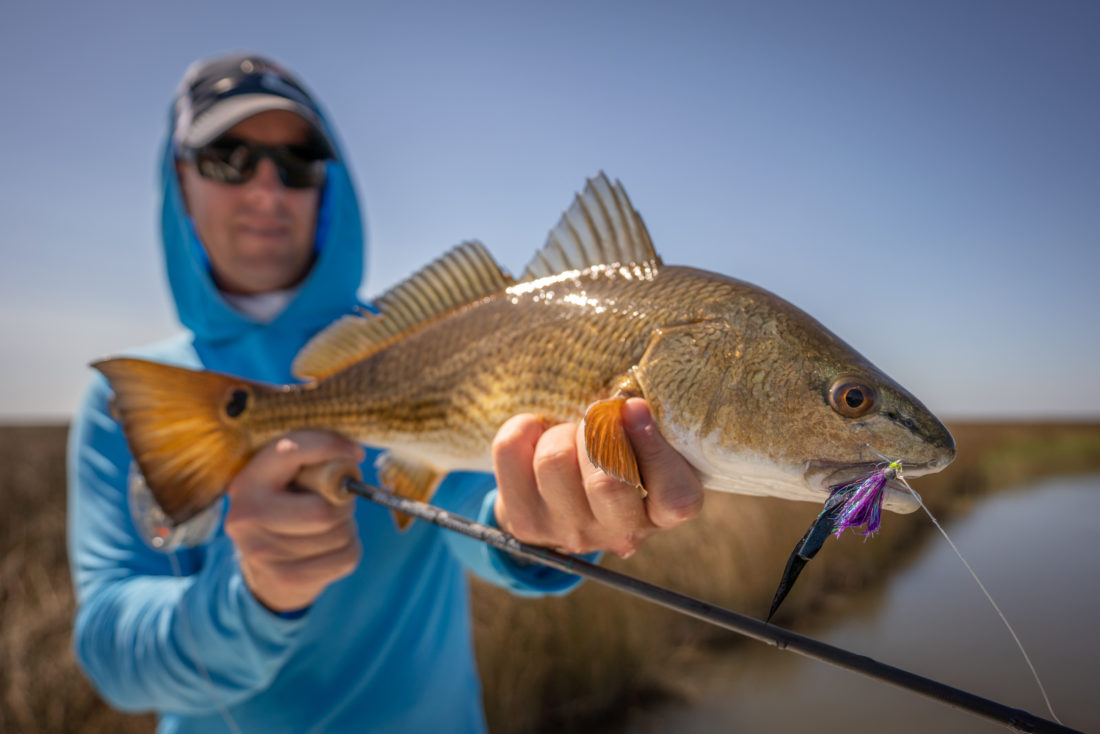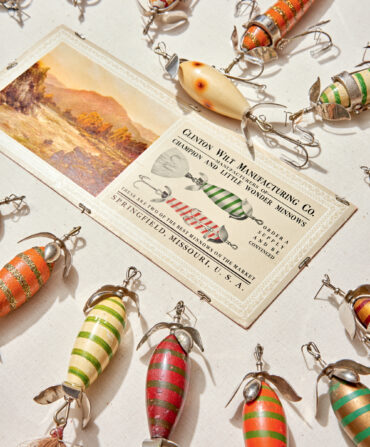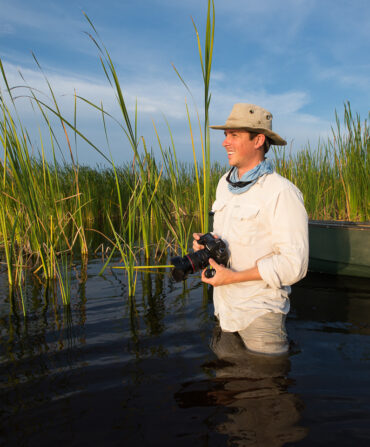John Mauser knows exactly where he wants to be. We’re fishing the saltmarsh ponds near North Carolina’s Bogue Inlet, where Mauser guides for redfish out of an East Cape skiff and for false albacore and other nearshore targets in a 23-foot Parker. He poles his skiff through tiny two-foot-wide rivulets to sneak into pocket ponds in the marsh that only a great egret would know about. But things aren’t just right, and Mauser likes things just right. “I’d really like to see the roots of this marsh grass holding on to the mud,” he says. “The fish are here, but it’s not just right. In a couple hours we’ll be back to get them.”
That mindset has come in handy with Mauser’s side-gig-that-could-become-the-real-gig: building a small-batch production fly rod manufacturing company in tiny Swansboro, North Carolina. The twenty-year-career marine biologist formed his Mauser Fly Fishing in 2017 to produce the sort of fly rods he’d want to fish himself. “I wanted a rod that I would fish with the way we fish down here,” he says. “Not a crazy-fast rod for ultimate line speed and top-end juice. But a rod I can use to cast to skittish redfish in the morning and then bomb line out for albacore in the afternoon.” The result is his Waterman series, the flagship in what is now a three-series line of sixteen models from 3-weight through 12-weight.
These aren’t custom fly rods, crafted from someone else’s blanks. Mauser designs the rod actions and works with engineers to fine-tune the tapers, sources the handle corks and guides, and has the reel seats machined to his own specifications. Ninety-five percent of the rod components are made in America, and a small team assembles everything in his beloved Swansboro. “I’ve always wanted to build a company around the things I love,” he says. “And I thought: If I could figure out how to do this in one of the coolest, most beautiful places in the world, well, how exciting is that?”
Dreams like Mauser’s have fueled Southern-inspired innovation in fly fishing for years. Some of those dreams have taken off far beyond anyone’s wildest imagination. (YETI, anyone?) Others are gaining traction in the hands of some of the best anglers in the world. (We’re looking at you, Nautilus Reels.) When you’re thinking of adding to the fly-fishing arsenal this spring and summer, take a look at these homegrown manufacturers. They all started where Mauser is right now. “When I see a picture of a permit someone caught in Mexico on one of my rods,” he says, “I know this is more than a dream.”
Mauser Fly Rods
I’ve been slinging a Waterman 890 eight-weight rod at early bonito and spring running false albacore, and it’s a walk-on starter for me now. The rod is something of a departure from the super-fast action rods that get a lot of the saltwater buzz these days. The progressive fast-action taper has a nice touch of rod feel, one I can easily sense load behind me, perfect for finessing a fifteen-foot cast to a school of reds that suddenly beeline for the boat. But there’s plenty of the oomph required for hurling sinking-tip lines to bonito blitzing nearshore reefs. I haven’t tried a Mauser Arete freshwater rod yet. But I will. $695; mauserflyfishing.com
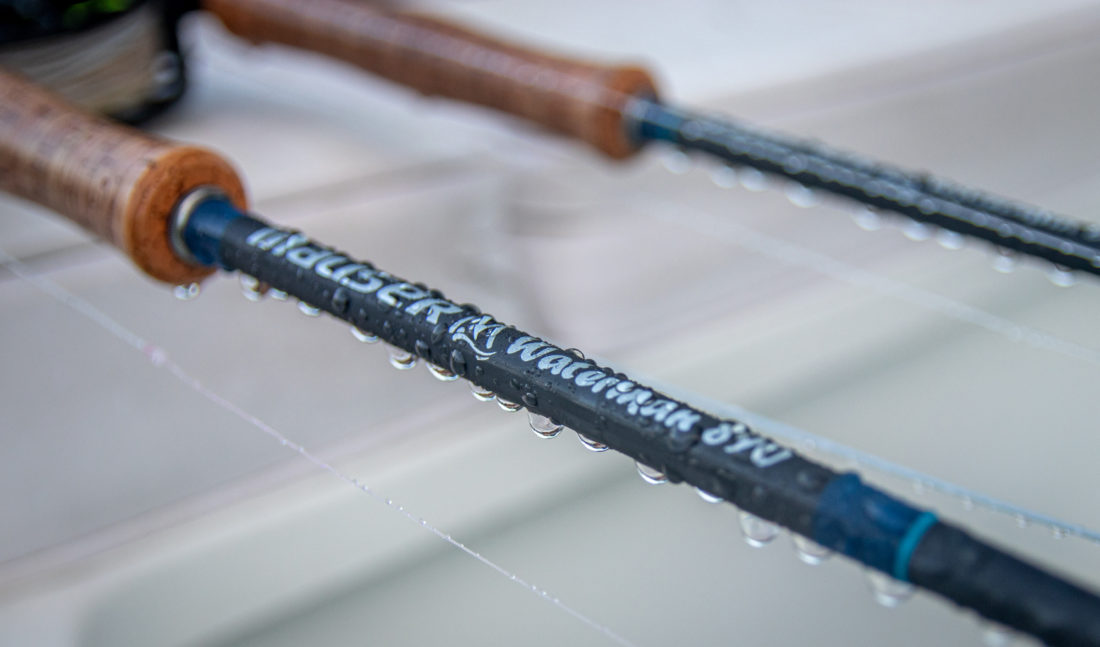
Nautilus Fly Reels
It’s a curious blend of old school/new school coming out of the Nautilus Reels shop in Miami. Kristen Mustad founded the company in 2013, bringing with him his family’s 144-year-old Scandinavian heritage of hook manufacturing. But Nautilus Reels are anything but stodgy. Ceramic bearings, titanium drag shafts, gigantic arbors that suck in more than a foot of line with a single handle turn—they’re as technically innovative as they are sexy. The new CCF-X2 line of fully sealed reels will stop traffic at the boat ramp the same way they stop big-game fish. And the 8/10 and 10/12 sizes share the same frame, so you can cover line weights from 8 to 12 with one reel just by swapping out spools. From $445; nautilusreels.com
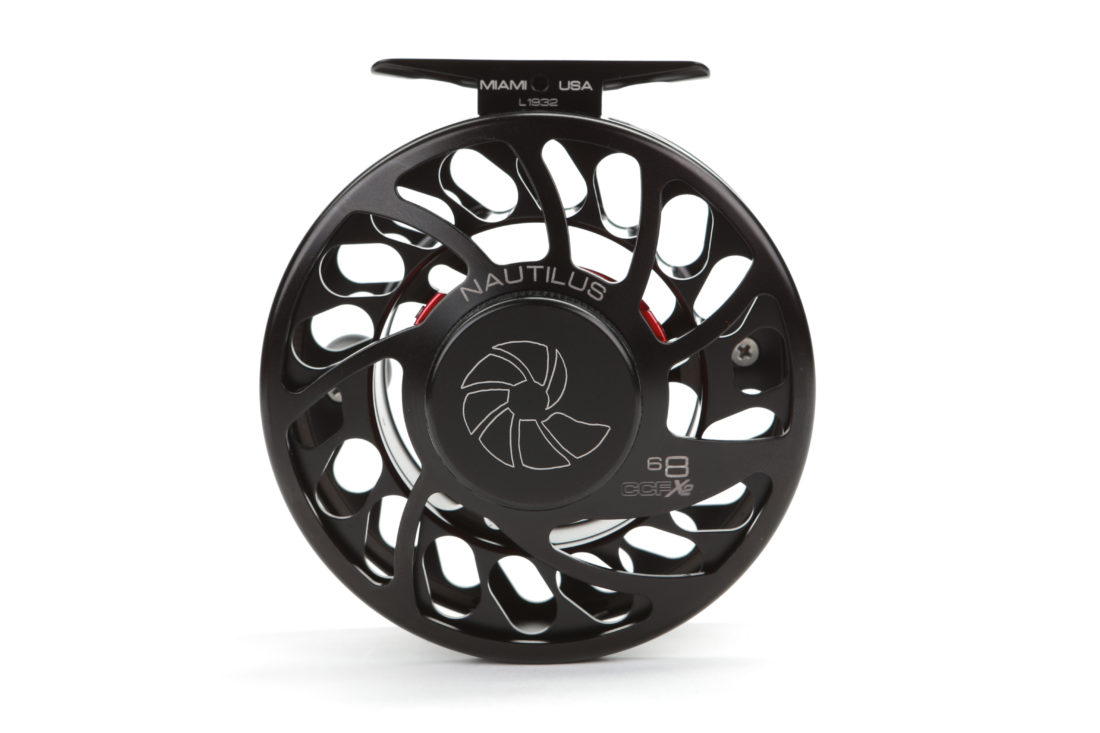
Bajío Sunglasses
Although bajío is the Spanish word for “shallows,” this new sunglasses company out of New Smyrna Beach, Florida, has a deep pedigree: It was co-founded by former Costa del Mar exec Al Perkinson, who also started the non-profit Indifly to help indigenous peoples develop sustainable fly-fishing businesses. That eco-minded ethic informs the Bajío line, with many models sporting frames made from plant-derived bio-based nylon, which is lighter than carbon fiber and super tough, and coconut-husk frames are on the way.
I tried a pair of the Scuch shades with the bioplastic frames and blue light–blocking, polarized green glass lenses. They’re so light I had to pull the invoice to be convinced the lenses were glass and not polycarbonate. They cut the million-watt glare bouncing off fiberglass boat hulls and open ocean, but I could still run the boat in early light without feeling like I needed to switch pairs. Now I’m faced with a conundrum: Stash them in my coastal tackle bag so I never leave the marina without them, or wear them as my everyday shades because they’re so comfortable. $249; bajiosunglasses.com

YETI Panga Backpack 28
I’ve jumped on the submersible pack train, thanks to my son insisting that I shed my old-school fishing vest. (“Dad, no.”) I’ve even evolved from a sling pack to a submersible fishing daypack, just like the cool kids. They’re on to something. YETI’s Panga Backpack is large enough to carry enough fishing gear and grub for a full day of hiking into a blue-line headwaters trout stream, but the pack is still light and trim, so it doesn’t get in the way of casting. And since it’s completely waterproof, I can wade as deep as I want without having to wad up a fishing vest and hold it overhead. I can also cinch down a pair of trekking poles for the hike in and out, and there’s a sleek outside pocket to stash tippet, ibuprofen, and whatever gout medicine might be required while channeling my inner millennial. $300; yeti.com
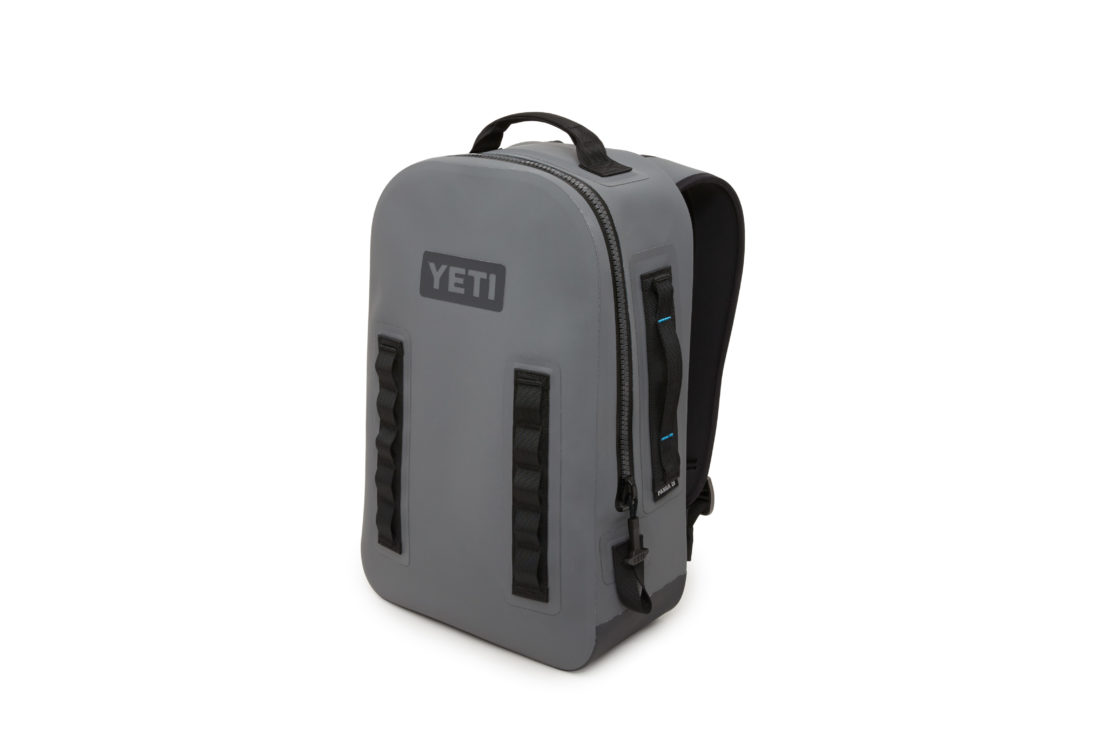
Stonefly Landing Net
Charleston, South Carolina, native Ethan Igleheart started a woodworking company in his hometown in 1994, operated Carolina Cotton Ties for almost ten years, and then was bitten by the fly-fishing bug in 2014. He now lives near the trout-rich waters of the Arkansas Ozarks and meticulously crafts some of the sweetest wooden landing nets you’ll ever see. He keeps a small stock on hand for sale, but he mainly builds nets to order. You can select from four sizes, suitable for small native brookies up to fish-of-a-lifetime whoppers, and from woods such as spalted sycamore, maple and buckeye burls, walnut, and tamarind. Igleheart also recently launched a collaborative “catch and release” project with famed rod builder Tom Morgan Rodsmiths of Bozeman, Montana: a custom rod and matching net, with the reel seat and net handle made of the same custom-selected woods. Swanky. From $179; stoneflynets.com

Follow T. Edward Nickens on Instagram @enickens.
Garden & Gun has affiliate partnerships and may receive a portion of sales when a reader clicks to buy a product. All products are independently selected by the G&G editorial team.


